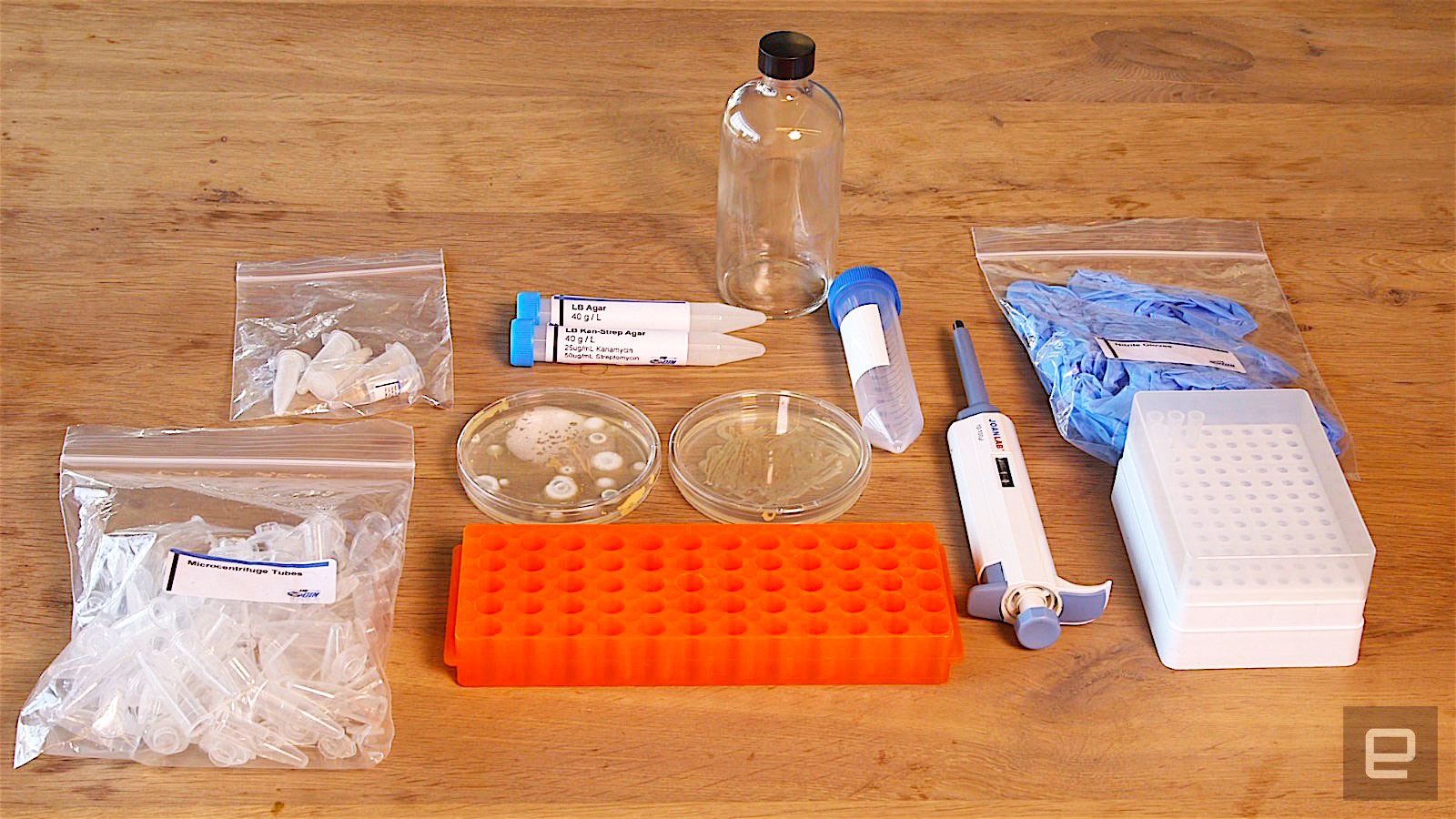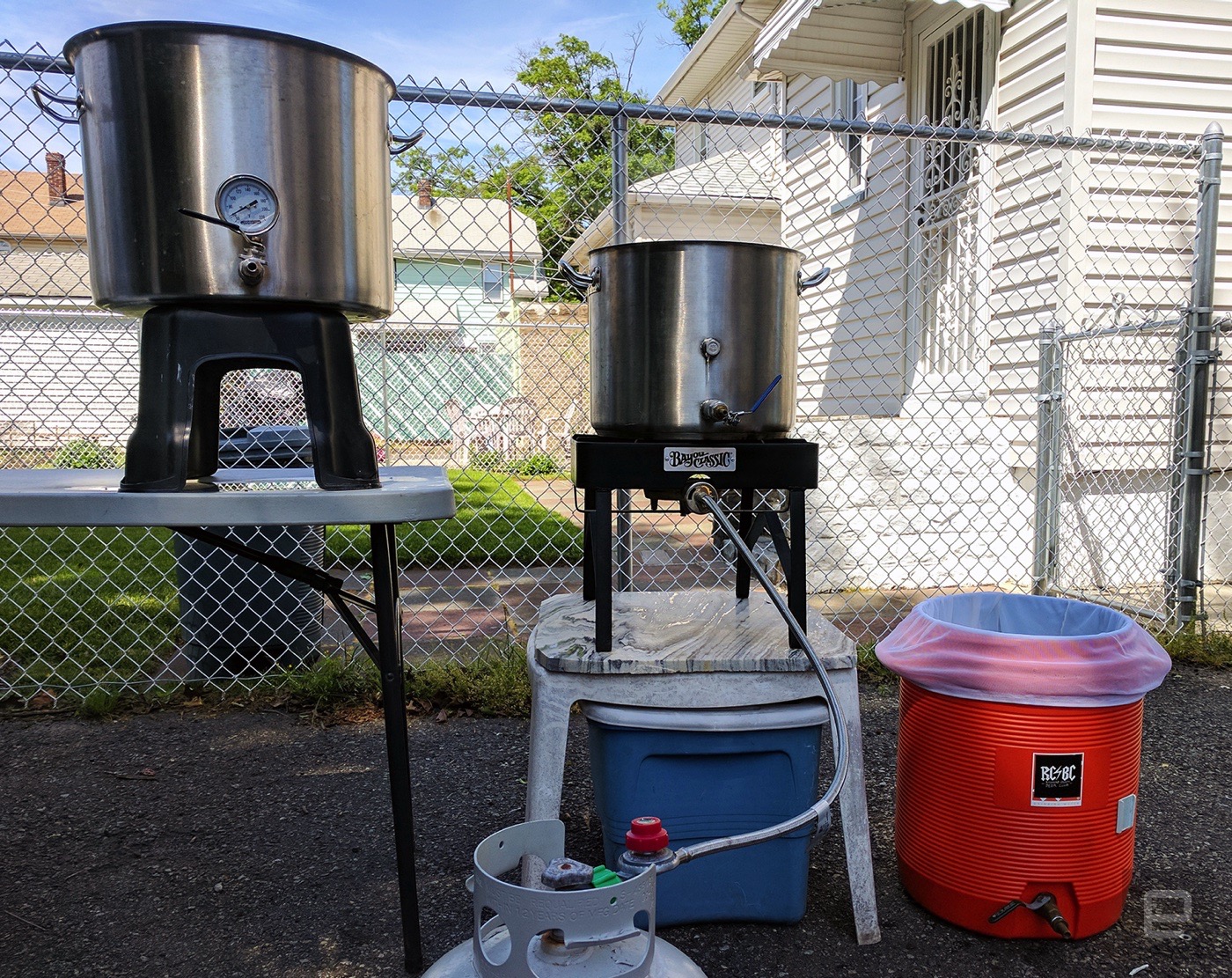Alright, so how did I do it? With a technology called CRISPR, which is pretty much the belle of the science ball right now. CRISPR stands for "clustered regularly interspaced short palindromic repeats" and it essentially lets you snip out bits of DNA and replace them with whatever you want. It actually relies on a basic feature of bacterial immune systems.
Bacteria genomes have repeating sequences of DNA with bits of other DNA sandwiched between them. These are the "clustered regularly interspaced short palindromic repeats" that give CRISPR its name. What scientists eventually discovered, is that those sequences of unique DNA, in between the repeating bits, matched the DNA of viruses. Basically it's a gallery of Bacteria's Most Wanted.
A set of enzymes called CRISPR-associated proteins, or Cas for short, look for these bits of DNA as a way to identify danger when an intruder is detected. When a virus is spotted, the proteins act like assassins, snipping out those offending bits of DNA, rendering the virus harmless. More importantly, it turns out, you can basically train these Cas proteins to look for any sequence of DNA you want. Then it can replace them with another piece of genetic code.
This all sounds pretty complicated, but you can actually do it in your kitchen with a $160 kit from a company called The Odin. The particular kit I used includes everything you need to make baking or brewing yeast glow green under a black light.

To start I prepared a whole bunch of agar plates -- petri dishes filled with a nutrient rich gel for the yeast to grow on. Then I had to wake up my dried french saison yeast with a little bit of water and "streak" the little guys out on the plates and put aside for about 24 hours to let them grow.
Once the yeast was healthy and I had full cultures, it was time to prep them for their transformation. I introduced them to a solution of chemicals and salts that weakened the cell walls so that our new DNA can enter more easily. Then it was time to introduce the plasmid (a small molecule of DNA) carrying the genes I want the yeast to adopt. The genetic code introduced in this case tells the yeast to produce Green Fluorescent Protein, which is what causes it to glow. Basically we're tricking the yeast into thinking the DNA we introduced is it's own, so that it makes the Cas proteins to cut out the parts we want to replace.
Once it's all combined the mixture gets incubated in a warm water bath for about an hour, before adding nutrients to the solution and putting the whole thing back in a warm water bath for another 4 hours. This gives the yeast time to recover and replicate the DNA that will make it fluoresce. Then it's time to streak the modified yeast on some new agar plates and wait again for them to grow into thriving colonies.

A few days later I had yeast that glowed green under a black light.
Now, a petri dish worth of yeast isn't nearly enough to brew a beer with. So I had to make a starter -- a weak proto-beer that the yeast can feast on and build their strength. Eventually I had a one liter Erlenmeyer flask filled with fluorescent French Saison yeast.

Brewing beer itself is pretty straight forward but here's the TL;DR version of how it works: Grains, such as barley, are steeped in hot water to extract their sugars creating a liquid called wort. The wort is then boiled to sterilize it, break down and remove unwanted proteins, and extract flavors from additives like hops -- the little green cones that deliver all that lovely beer flavor and aroma.
Then the wort is cooled, the yeast is added and it becomes a waiting game. The yeast eats away at the sugar converting it to carbon dioxide and delicious, delicious alcohol.
The results of my grand experiment were successful... ish.

The yeast certainly glowed and the first couple of samples pulled from the fermenter did as well. But, as the beer settled and the yeast dropped out of my brew, the glow became more and more faint. By the end it was a pale glimmer rather than a blinding glare.
At the end of the day, my glowing beer was a strange novelty; it's merely meant to show off the power and simplicity of CRISPR. It's a technology that could one day lead to a cure for diseases like sickle cell or AIDS, or be used to breed drought resistant plants. But that's still a ways off. Right now CRISPR is in its infancy, so I'll just have to settle for yeast that can brew unique looking (if not particularly unique tasting) beer.

0 comments:
Post a Comment